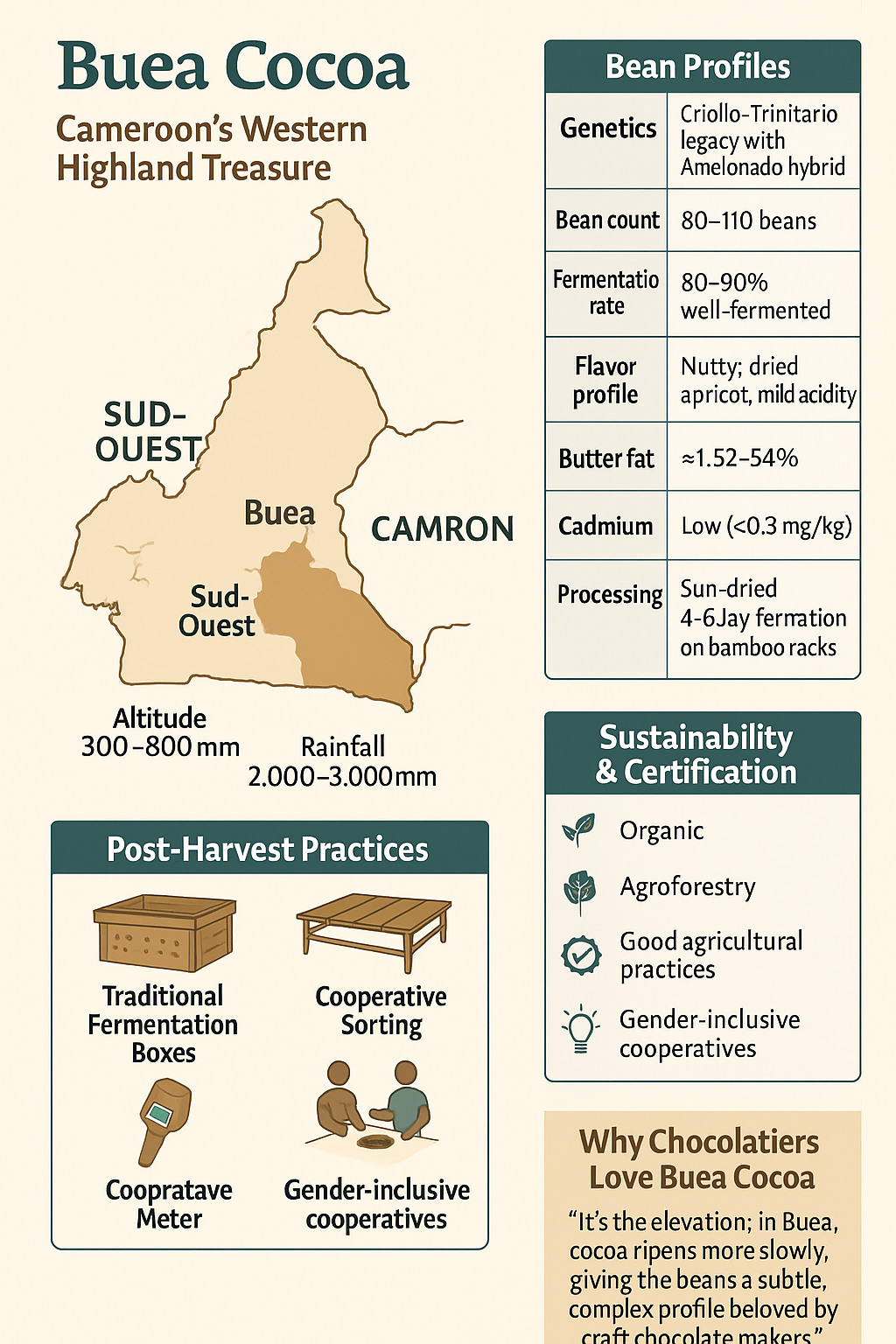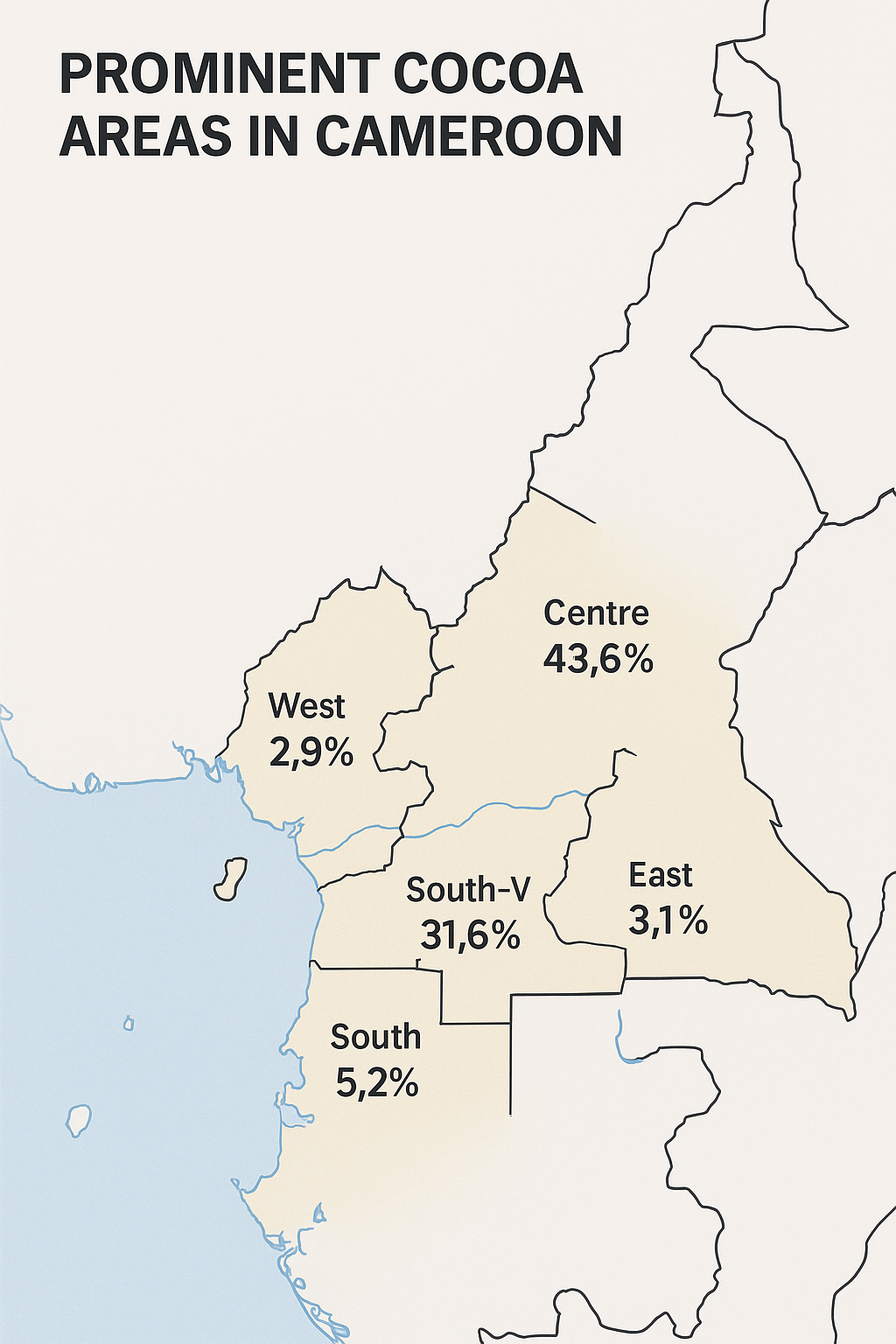BUEA, CAMEROON
-
Annual Range: Highs between 27.2°C (81°F) and 32.1°C (89.8°F); lows between 23.2°C (73.8°F) and 25.3°C (77.5°F).
Warmest Months: February and March.
Coldest Month: August.
Impact on Cocoa: Consistently warm temperatures are ideal for cocoa growth, promoting healthy pod development and bean fermentation.
-
🌧️ Rainfall
Annual Total: Approximately 3,000–4,000 mm (118–160 inches).
Rainy Season: March to November, peaking in July and August.
Dry Season: December to February.
Impact on Cocoa: Abundant rainfall supports cocoa tree growth but can hinder drying processes and increase disease risk if not managed properly.
-
Range: 71% in January to 83% in July and August.
Impact on Cocoa: High humidity favors cocoa tree health but can also promote fungal diseases, necessitating vigilant farm management.
-
Average Speeds: 6–8.4 km/h (3.7–5.2 mph), with February and August being the windiest months.
Impact on Cocoa: Moderate winds aid in pollination and air circulation, reducing disease prevalence.
-
Sunniest Months: January and February, averaging 9.4 hours of sunshine per day.
Least Sunny Month: July, with an average of 6.6 hours of sunshine per day.
Impact on Cocoa: Adequate sunlight is crucial for photosynthesis and pod ripening; reduced sunshine can delay these processes.
-
Rainfall Variability: Influenced by factors like the Intertropical Convergence Zone (ITCZ), leading to peaks in June-July and September-October.
Impact on Cocoa: Unpredictable rainfall patterns can disrupt planting and harvesting schedules, affecting yield and quality
-
Seedling Loss: Cameroon loses 40–50% of cocoa seedlings annually due to prolonged dry seasons and erratic weather patterns.
Impact on Cocoa: Climate change poses significant threats to cocoa production, necessitating adaptive strategies like drought-resistant varieties and improved irrigation.
BUEA, CAMEROON MARK UP


